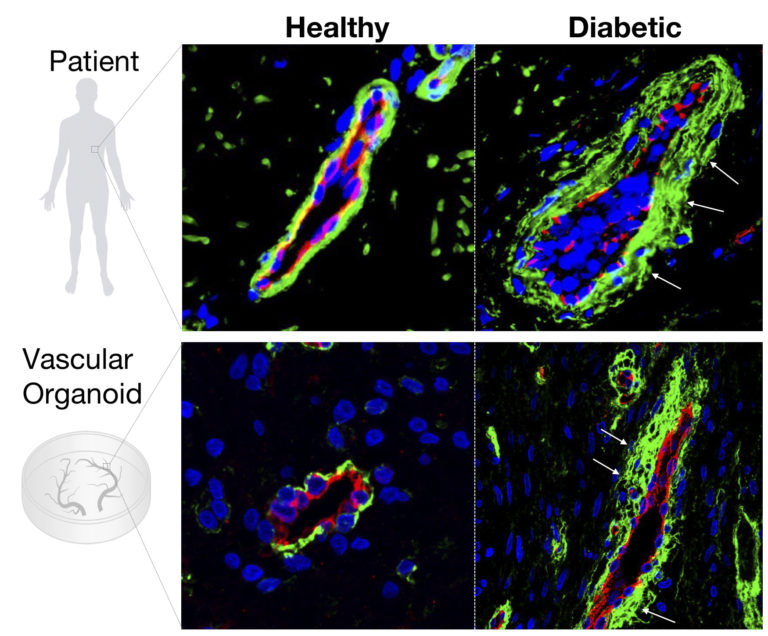Scientists have grown human blood vessels in a petri dish

- Laboratory-made human blood vessels, according to the original data, is an example of vascular organoids. Credit: IMBA *
Groundbreaking technology can improve the study of vascular diseases such as diabetes Scientists for the first time in a petri dish organocytes as excellent human blood vessels were able to grow.
The breakthrough engineering technology, outlined in a recent study published in Nature today, dramatically improves the exploration of vascular diseases such as diabetes, identifying it as a key way to potentially prevent changes in blood vessels - the main cause of death and disease among people with diabetes.
A organoid is a three-dimensional structure that grows from stem cells that mimic an organ and can be used to study the properties of this organ in a petri dish.
“Being able to build human blood vessels as organoids from stem cells is a game changer,” said the study’s senior author Josef Penninger, the Canada 150 Research Chair in Functional Genetics, director of the Life Sciences Institute at UBC and founding director of the Institute for Molecular Biotechnology of the Austrian Academy of Sciences (IMBA).
“Every single organ in our body is linked with the circulatory system. This could potentially allow researchers to unravel the causes and treatments for a variety of vascular diseases, from Alzheimer’s disease, cardiovascular diseases, wound healing problems, stroke, cancer and, of course, diabetes.”
Diabetes affects approximately 420 million people worldwide. Most of the diabetic symptoms lead to changes in blood vessels, impaired blood circulation, and oxygen supply to the tissues. Despite its prevalence, little is known about vascular changes due to diabetes. This limitation has slowed the development of much-needed treatment.
 Base membrane
Diabetic blood vessel changes in patients and human vascular organoid. The base membrane (green) around the blood vessels (red) has greatly expanded in diabetic patients (white arrows). Human vascular organoids that are model diabetic o in the laboratory can now be used as a diabetic model to identify new treatments. Credits: IMBA
Base membrane
Diabetic blood vessel changes in patients and human vascular organoid. The base membrane (green) around the blood vessels (red) has greatly expanded in diabetic patients (white arrows). Human vascular organoids that are model diabetic o in the laboratory can now be used as a diabetic model to identify new treatments. Credits: IMBA
To solve this problem, Penninger and his colleagues developed a groundbreaking model: the three-dimensional human blood vessel organoids grown in a petri dish. These de vascular organoids insan can be planted using stem cells in the laboratory and dramatically mimics the structure and function of real human blood vessels.
Suggested article: </ strong> Learn more and learn better: Here are the proven techniques for your memory! </a> </ p>
When the researchers transferred blood vessel organoids to the mice, they discovered that they became excellent functional human blood vessels, including arteries and capillaries. This discovery shows that it is possible to grow not only blood vessel organocytes from human stem cells in a container, but also a functional human vascular system of another type.
“What is so exciting about our work is that we were successful in making real human blood vessels out of stem cells,” said Reiner Wimmer, the study’s first author and a postdoctoral research fellow at IMBA. “Our organoids resemble human capillaries to a great extent, even on a molecular level, and we can now use them to study blood vessel diseases directly on human tissue.”
One feature of diabetes is that the blood vessels show abnormal thickening of the basal membrane. Consequently, delivery of oxygen and nutrients to cells and tissues is severely impaired and causes a number of health problems leading to amputations such as renal failure, heart attack, stroke, blindness and peripheral artery disease.
Credit: https://news.ubc.ca/2019/01/16/scientists-grow-perfect-human-blood-vessels-in-a-petri-dish/


Comments